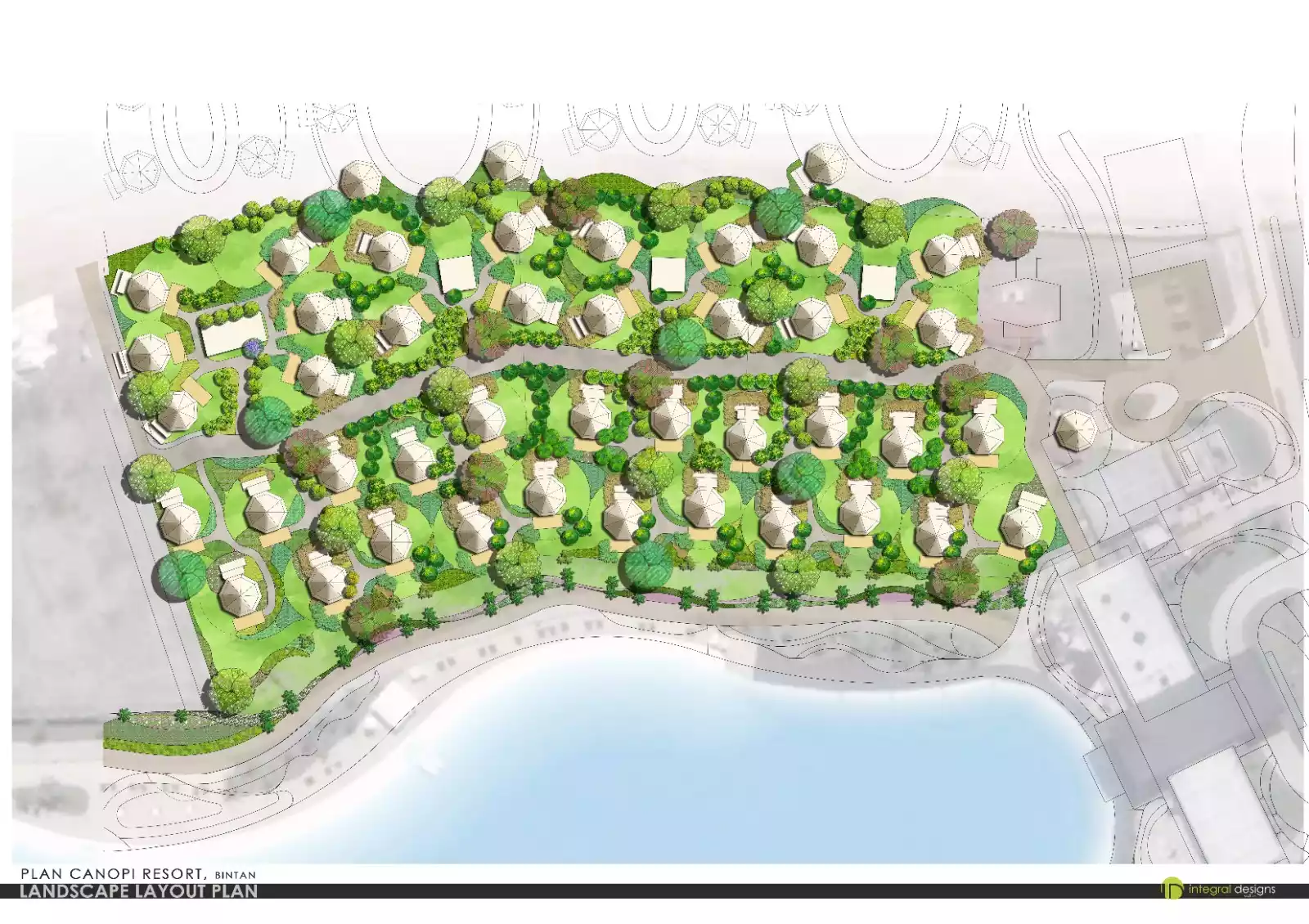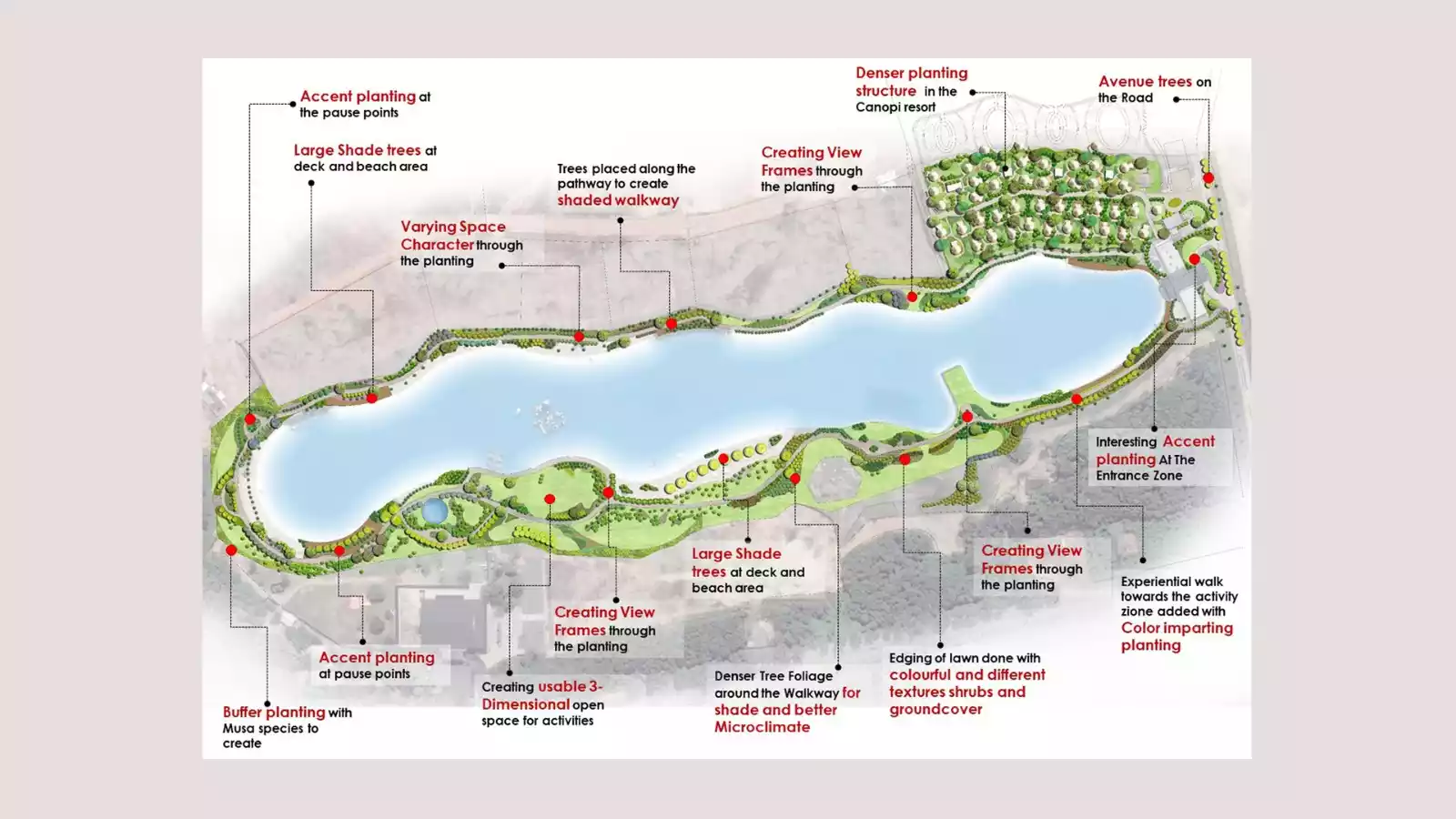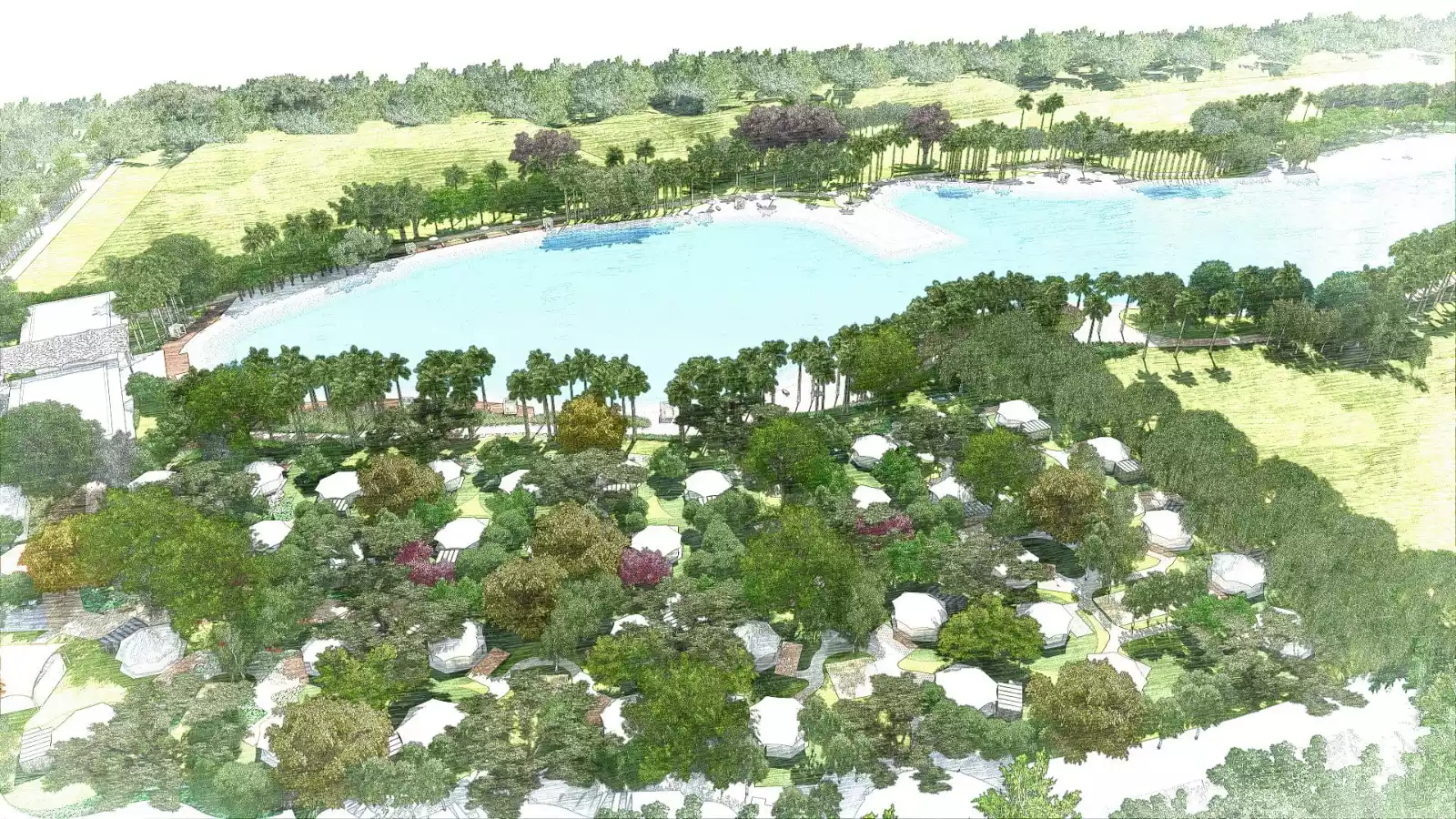Canopi Resort and Chill Cove
Bintan, Indonesia
34 Acres
Chill Cove, Treasure Bay is a waterfront resort city located on the Indonesian island of Bintan. The destination resort integrates wellness, leisure, cultural, residential, and commercial real estate supported by infrastructure that adheres to international standards.
The master-planning provides for numerous zones that are integrated by lagoons, waterways, and promenades. Each zone has its individual appeal and identity, to cater to an array of visitors.
Space planning of the resort focuses on ease of legibility and robust use of spaces while reflecting the coastal landscape character in the spatial zoning.



The exploration of landscape starts with the Lagoon Zone acting as the central feature of the entire resort providing both passive and active enjoyments of the one-of-a-kind resort water experience. Treasure Bay Bintan’s Crystal Lagoon is South-East Asia’s first man-made seawater lagoon at 6.3 hectares. The Lagoon Zone serves as the key orienting feature where it is further differentiated into passive and active parts according to the water activities proposed.
The villa landscapes are distinct with themes inspired by the palm groves, lagoon and dunes through colour, material, and planting palette. The intricate network of green fingers between the villa clusters with characters emulating coastal dune landscape form the village greens as one of the key public activity areas within the resort. Green fingers at the Villa Zone are provided to connect villa clusters whereby guests can enjoy the landscape passageway as much as any outdoor landscape area. The area of hardscape was used only where necessary leaving the rest of the areas as verdant as possible. This helps in bringing a feeling of contemplation and calmness to the entire development. Nature in the form of Tropical plantation, Tree covered walkways and Gardens for each villa became key elements and the main driver of guest experiences.



The design does incorporate sustainability aspects in its implementation. Minimum cut and fill were done during construction and whatever additional material was excavated was used on site in the form of undulating green dune landscape. Though it is dense development the landscape design was instrumental in bringing as much green as possible and reducing the use of hardscape. Native vegetation was used in the design and all the water for irrigation came from treated grey water.
The landscape spaces are very carefully designed using local materials which are easy to maintain and replace when necessary. All the vegetation is indigenous tropical vegetation and used in their most natural form to reduce major maintenance work like continuous pruning. Moreover, a lot of flexible open green spaces are incorporated in the design so they could be used in multiple ways and provides the experiential adventure throughout the zones.